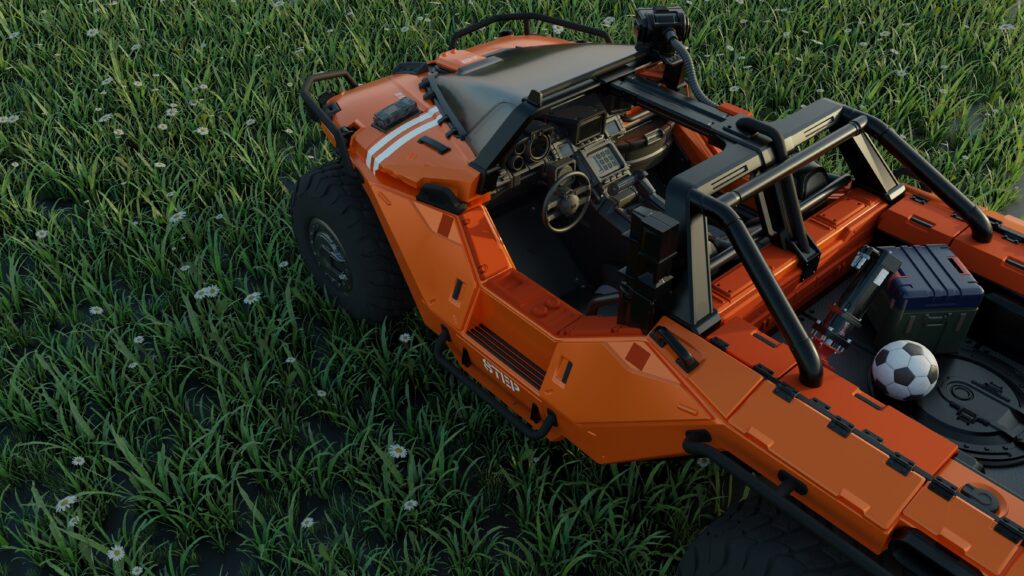Nowadays, 3D rendering has revolutionized the field of mechanical product design. Software like AutoCAD Mechanical is widely used not only to create cost-efficient designs but to essentially bring them to life. 3D rendering allows for superb creative control while providing a variety of tools that optimize the work that engineers must do within a project
This article will talk about how 3D rendering has changed the playing field when it comes to mechanical product design. We will discuss specific examples of how this technology has improved the field as a whole.
How 3D Rendering Is Changing Mechanical Product Design
The recent advancements in technology have changed the way engineers work on their projects. 3D rendering now plays an integral part in mechanical product design as it offers a lot of benefits in terms of optimization, customization, and presentation of models before production actually begins. Additionally, 3D rendering software allows projects to move at a faster pace and produce far better results than ever before.
Perhaps one of the biggest advantages that 3D rendering presents for mechanical product design is the accurate description of exact geometry. It allows for proper shading parameters, along with detailed light source specifications. Also, virtual camera placements make for exceptional presentational capabilities. 3D renders can produce realistic textures and colors, allowing products to be presented in a modern way.
Overall, 3D rendering has taken mechanical product design to the next level. In the following paragraphs, we will explore the specific benefits that engineers get in their everyday work.

The Benefits of 3D Rendering for Mechanical Product Design
As we already mentioned, 3D rendering has changed the way mechanical product design works. From experimentation and process optimization to overall cost efficiency — 3D rendering software is making life easier for engineers across the board. Let’s take a look at some examples of how this technology improves mechanical product design.
Optimized Workflows
Mechanical product design is a complex process that includes a lot of variables and factors that need to be taken into account. Engineers spend a lot of time on a single design and need to ensure that the final product is both highly functional and aesthetically pleasing. It is no wonder that more and more engineers are turning to 3D renderings to achieve this.
With 3D renderings, all the hard work engineers put into their design results in the best possible outcome. Highly polished, detailed 3D renders can be produced faster than ever before. On top of that, 3D rendering software has lots of helpful functions that ensure the quality, usability, and performance of the final product. Essentially, 3D rendering allows engineers to create the best possible mechanical product designs.
Cost-Efficiency
3D renders allow engineers to optimize their models and detect issues before the final production begins. Mechanical products usually have extremely complex designs — in some cases, they are composed of several parts that need to work together. Such intricate designs are prone to issues and imperfections. However, 3D renders have the visual capabilities and metadata to efficiently detect and remove many problems.
If a design moves to the production stage with flaws and imperfections, going back to the drawing board can cost a lot of time and money. Using 3D rendering software is perhaps the most cost-efficient way of creating mechanical product designs. The functionality it offers when it comes to weeding out issues is simply essential for an optimized work process.
Design Testing
Depending on the mechanical design project you are working on, you might have to test out a variety of different properties. Sometimes, you even have to develop a number of prototypes at the same time. 3D renders allow you to experiment with the look, feel, and functionality of a design in great depth. From textures and colors to different lighting schemes and even tweaks to shapes and size — 3D renders allow you to do that. You can essentially A/B test different versions of the same design without putting in much extra work.
As you can imagine, this opens a whole lot of possibilities for engineers. Before 3D renders, an engineer would have to develop separate prototypes in order to showcase even a minor change in design. With modern software, however, this is possible in a quick and cost-efficient manner.
Better Presentation Capabilities
Design proposals can be much more effective if presented in a striking, memorable way. 3D renders allow you to create stunning visuals which can be used for effective presentations to stakeholders and investors. Additionally, the visuals can be repurposed for great marketing materials and end-customer presentations. 3D rendering software comes with pre-defined HDRI scenes that show your product in the best possible way.
From advanced lighting design and specifications to motion blur and other effects — 3D renders give you the tools to make your product stand out. Also, implementing them will not cost you a lot when it comes to time and resources. The importance of visuals cannot be underestimated when it comes to mechanical product design. Ultimately, 3D renders allow you to showcase your product in a polished, professional way.
Conclusion
Recent advancements in the field of 3D rendering have created even more opportunities for engineers. The process of generating 3D models used to be quite demanding when it came to CPU and graphic processing power. However, nowadays, there are real-time rendering engines that reduce resource consumption considerably. On top of that, newer versions of 3D rendering software are much more intuitive and offer plenty of quality-of-life improvements.
3D renders will continue to change the field of mechanical product design in the foreseeable future. We can expect to see many more innovations designed to improve both the quality of this software and all the processes related to creating it.

Jack Barrett is an Account Executive for Microsol Resources focused on engineering and construction firms in New York. Jack has a solid background in solution selling and provides a unique insight into the AEC industry and the technology trends. He has worked with AEC firms in assisting them with the software and services that provide Microsol Resources customers with the power to solve their business, design, and environmental challenges.


